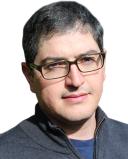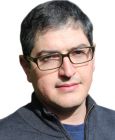Attention
Hypostatic Attention
Part I: A review of "In Search of the Third Bird" and attention protocols.
Posted March 27, 2022 Reviewed by Vanessa Lancaster
Key points
- Attention focuses cognitive energy and anchors mental action on objects of attention.
- Attention is a fundamental capacity to focus on objects and freely do things with them creatively.
- Charles Sanders Peirce explained the importance of hypostatic attention for culture and human progress.
- "In Search of The Third Bird" documents various kinds of attention that can be understood as hypostatic.
In Search of the Third Bird documents the proceedings of an extraordinary society devoted to attention practices. The historical and disciplinary contours of the Order of the Third Bird are difficult to delineate. Their attention practices, however, are exquisitely documented in this book. We know that the essential attention protocol has four stages, broadly described as encountering, attending, negating, and realizing.
There are multiple formulations of this protocol. For instance, in a manual on fishing contained in the W-Cache (the main archive about the Order of the Third Bird), the attentive practitioner is instructed to encounter the fly that will be used for fishing, then carefully attend to it, then engage in a “double-take,” and then conclude with final consideration of the insect.
This manual illustrates the diversity of objects of attention and their presentations for an equally diverse variety of subjects of attention (for instance, fish, human fishers with practical interests, and attentive appreciators of objects of attention involved in activities like fishing but without fishing interests).
The great variety of objects of attention that one could engage with through this protocol invites the question: What is an object of attention—and what are the possible, yet not actual or physically available, objects of our attention? We will not go here into the historical, philosophical, and theoretical nuances of the book. Instead, we focus on the rather central question of what can be, or become, the focus of our attention.
The book has a unique and insightful section about a set of documents called “The Finding Aid Folder.” The implications of this file for the question concerning the objects of attention are quite staggering. In a rather mathematical formulation, the W-Cache is described as a paradoxical series that contains but cannot contain itself (in a way that is reminiscent of Bertrand Russell’s paradox).
The objects listed in the Finding Aid Folder include: ritual artifacts, natural objects, objects made, manipulative objects, emotionally manipulative objects, perceptually manipulative objects, hypnotic objects, idiomatic objects, pieces of cake, breaths held, the long and the short of, the all of…is what it is; objects encased, negated objects, negated onlookers.
If this is a truly infinite list, as they suggest, how can there be an achievable set of practices of attention that can engage all of the objects in it? This indeed seems to be paradoxical. Are the objects of our attention really that big in variety and scope? How can we make sense of this? And can the list grow and “intensify” with our protocols of attention?
The American pragmatist philosopher Charles Sanders Peirce thought of beliefs as guides to action based on habit. This is relevant because habits of the mind can be characterized as attention protocols (or attentional biases). Peirce thought of norms for thought as habits that need to be put to use in action—in a way similar to a protocol of attention.
He was also a very skilled mathematician and was particularly interested in the way we attend to abstractions. His notion of hypostatization, or counting abstractions as real, resembles the way in which many of the objects of attention are “postulated” in the Finding Aid Folder. The philosopher Ian Hacking quotes the following remarkable passage from Peirce in the context of a discussion on Platonism in mathematics:
It may be said that mathematical reasoning (which is the only deductive reasoning, if not absolutely, at least eminently) almost entirely turns on the consideration of abstractions as if they were objects. The protest of nominalism against such hypostatization … as it was and is formulated, is simply a protest against the only kind of thinking that has ever advanced human culture (Hacking, 2014).
There are clear cognitive risks in reifying abstractions without justification and paying attention to abstract entities, such as possible visitors from other galaxies, which is why Peirce says that hypostatization must be done intelligently (and with action in mind). What is remarkable, however, is that this process is both limitless (think about the abundance of numbers) and “the only kind of thinking that has ever advanced human culture.”
Hypostatic attention is a kind of separation that makes our thinking and our acting more flexible and diverse. Attention can segment, diversify, make salient or more vivid not only objects but also their elements or properties, turning them into new objects of attention.
In his essay “On a New List of Categories” Peirce defines the act of attention as “the pure denotative power of the mind, that is to say, the power which directs the mind to an object.” He then writes:
“The terms “prescision” and “abstraction,” which were formerly applied to every kind of separation, are now limited, not merely to mental separation, but to that which arises from attention to one element and neglect of the other. Exclusive attention consists in a definite conception or supposition of one part of an object, without any supposition of the other." (Peirce, 1868|1992)
Any number contains, inherently, a combination of many numbers. For example, 2 is 1+1 (3-1, 10-8, etc.), and it is also the number that yields an irrational number when squared. How we pay attention to number 2, or to which aspects of it as a number, makes all the difference in the world. If we want to give an example of an irrational number, we select the square root of 2. If we are buying oranges at the local market, we “act upon” 2 and select the best 2 oranges for a salad.
What and how we pay attention to various objects can energize or enfeeble our minds, make us do or not do things, and increase or decrease our curiosities. Hypostatic attention is indeed the only kind of thinking that has advanced human culture in all directions. We pay attention to abstractions, making us the mightiest species on earth.
We attend to contracts, deadlines, plans, expectations, authorities, numbers, scientific theories, the calendar, our bank accounts. It is not an exaggeration to say that most objects of our attention in contemporary culture are hypostatic.
You see a fly for fishing. Is it just for fishing? It depends. If you are going fishing, then yes. If it is a fly used by an ancient society for fishing, then it is not just for fishing (its past purpose) but also for studying that society (its current purpose). If it is a beautiful fly, it is also for contemplating its beauty. And so on. An object of attention is the single focus of our attention.
But attention is also an action, and this means that all objects of attention are a kaleidoscope: Attention can always hypostasize, segment, abstract one aspect as the most salient object of attention, and ignore other aspects in order to focus mental energy on the “new” object derived from the original object. No wonder the Finding Aid Folder is endless and paradoxical. It aims to catalogue all possible objects of attention, with all sorts of divisions and multiplications, and yet, provide a limited set of attention protocols. Hypostatic attention helps explain this apparent paradox.
References
Burnett, D. G., Hansen, C. L. and Smith, J. E. H. In Search of the Third Bird: Exemplary Essays from the Proceedings of ESTAR(SER), 2001-2021. London, UK: Strange Attractor Press.
Hacking, I. (2014). Why is There Philosophy of Mathematics at all? Cambridge, UK: Cambridge University Press.
Peirce, C. S. (1992). “On a New List of Categories.” In The Essential Peirce, Vol. I (1867-1893). N. Hauser and C. Kloesel (eds). Bloomington, IN: Indiana University Press.




